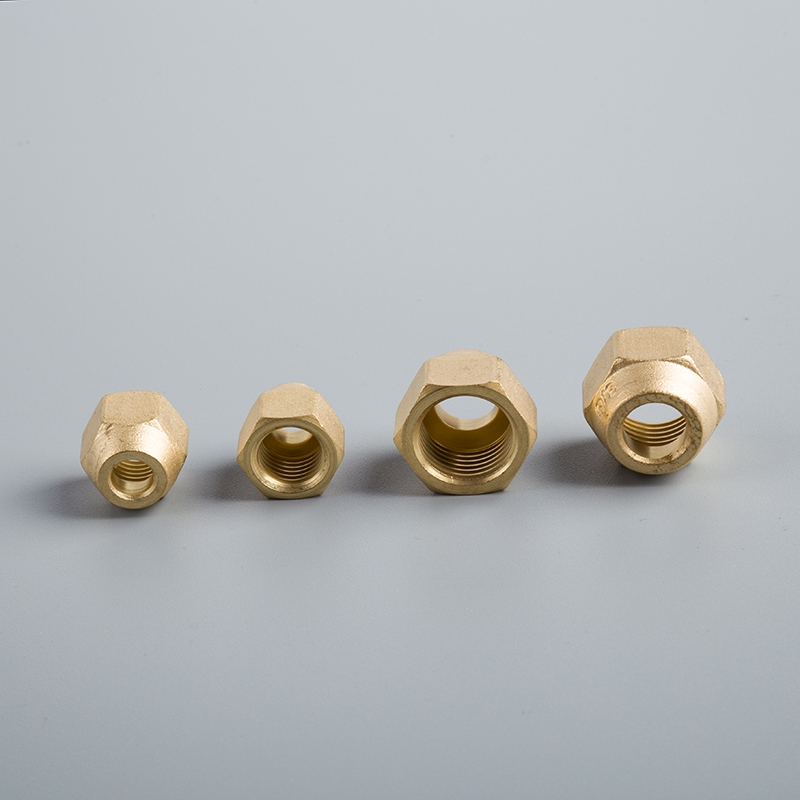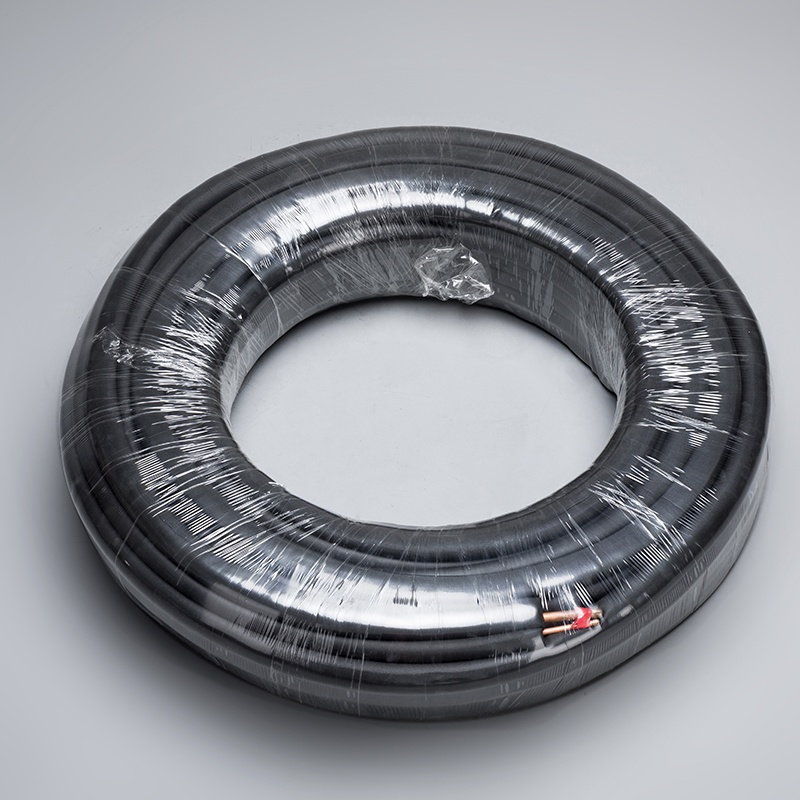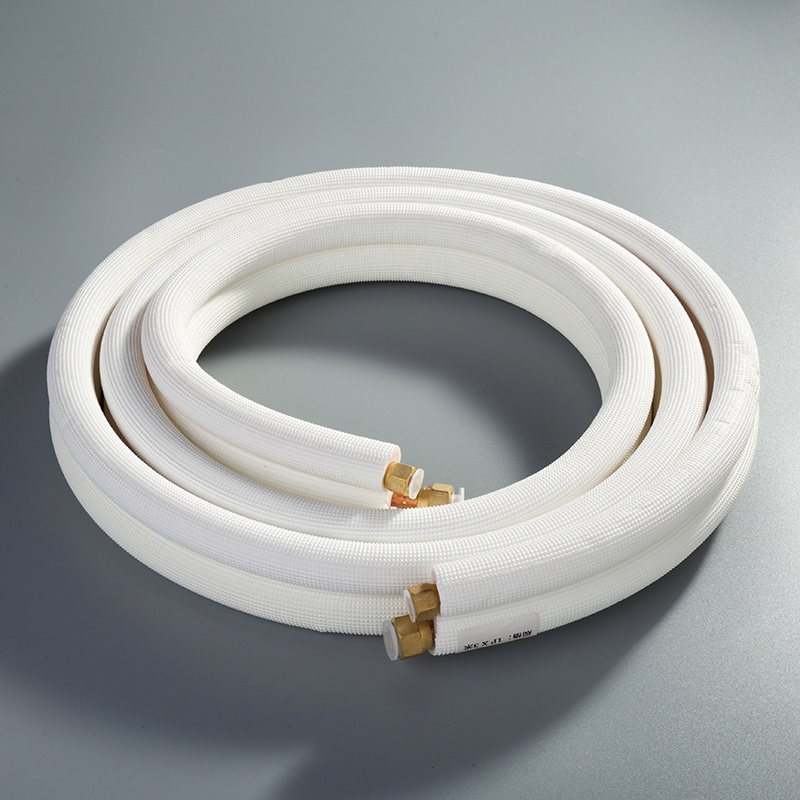How to Determine the Best Copper Pipe for Your AC Unit

Choosing the right copper pipe size for air conditioner systems is more than just a technical choice—it’s essential for ensuring your system operates efficiently. Selecting the proper size allows your air conditioner to perform optimally, reducing energy costs and minimizing wear and tear. However, using the wrong size, such as an air conditioner copper pipe c that doesn’t match your system, can result in poor cooling, increased expenses, and potential damage to your unit.
It’s also important to consider refrigerant compatibility. Not every air conditioner copper pipe hot is suitable for all refrigerants, so it’s crucial to match the pipe to your specific system. Always refer to the manufacturer’s guidelines to confirm the copper pipe size for air conditioner systems is a perfect fit. Paying attention to these details now can help you avoid significant issues down the road.
Key Takeaways
Picking the right copper pipe size is very important. The correct size helps refrigerant flow well and saves energy.
Check if the copper pipes match the refrigerant. Using the wrong pipes can cause leaks or damage the system.
Look at the pipe's wall thickness. Type K is the strongest, but Type M costs less and isn’t as strong.
Be careful during installation. Use proper tools and follow steps to avoid mistakes and keep the system working well.
Take care of the pipes often. Check for leaks or rust every six months to keep your AC working properly.
Types of Copper Pipes for Air Conditioners

When it comes to air conditioning systems, not all copper pipes are created equal. Each type has unique features and applications, so understanding their differences can help you make the right choice.
Soft Copper Pipes
Soft copper pipes are known for their flexibility and ease of use. You can bend them without needing special tools, which makes them perfect for custom installations. These pipes also resist corrosion, ensuring they last longer in demanding environments. Plus, their excellent thermal conductivity helps your AC system transfer heat efficiently.
Here’s a quick comparison to help you understand how soft copper pipes differ from other types:
Type of Copper Pipe | Characteristics | Applications |
|---|---|---|
Soft Copper Pipes | High malleability, corrosion resistance | Ideal for connecting indoor and outdoor units in AC setups |
Hard Copper Pipes | Enhanced durability, pressure resistance | Used for connecting air compressors in AC units |
Soft copper pipes are a great choice if you’re looking for something easy to install and reliable. However, they may not be as durable as hard copper pipes in high-pressure situations.
Hard Copper Pipes
If durability is your priority, hard copper pipes are the way to go. These pipes are rigid and can handle higher pressures, making them ideal for connecting air compressors or other critical components in your AC system. They’re built to last and offer excellent resistance to wear and tear.
Hard copper pipes are commonly used in HVAC systems where strength and longevity are essential. For example:
Application | Description |
|---|---|
Air Compressor Copper Pipe Usage | Ensures consistent airflow and pressure regulation in air conditioning units |
HVAC Systems Integration | Links various components securely and efficiently |
While hard copper pipes are less flexible than soft ones, their durability makes them a solid investment for long-term performance.
ACR Copper Pipes
ACR (Air Conditioning and Refrigeration) copper pipes are specifically designed for AC systems. They’re made with an optimized alloy composition that enhances thermal conductivity and resists environmental factors like corrosion. These pipes are also compatible with a wide range of refrigerants, ensuring versatility for different systems.
Here’s why ACR copper pipes stand out:
Excellent corrosion resistance reduces the risk of leaks.
Superior thermal conductivity boosts energy efficiency.
Withstands temperature variations without expansion issues.
ACR pipes also meet industry standards, such as ASTM B280, which ensures they can handle specific pressures and temperatures. For instance, a 1/4-inch ACR pipe can withstand up to 1406 psi at 100°F. This makes them a reliable choice for modern air conditioning systems.
By understanding the strengths of each type, you can choose the best copper pipe size for air conditioner systems that suits your needs.
Key Factors in Choosing Copper Pipe Size for Air Conditioner
Pipe Size and Wall Thickness
When selecting the right copper pipe size for your air conditioner, you need to consider both the pipe diameter and wall thickness. These factors directly impact the pipe's ability to handle pressure and ensure durability. Copper pipes are categorized into three main types based on wall thickness:
Type K: Thickest walls, offering maximum durability and pressure resistance.
Type L: Moderate wall thickness, balancing cost and performance.
Type M: Thinnest walls, suitable for low-pressure systems.
If your AC system operates under high pressure, Type K pipes are the safest choice. For standard residential systems, Type L pipes often work well. Type M pipes are more budget-friendly but may not last as long in demanding conditions. Always match the pipe's specifications to your system's requirements to avoid performance issues.
Refrigerant Compatibility
Not all copper pipes are compatible with every refrigerant. Modern refrigerants like R-410A require pipes that can handle their unique chemical properties. ACR copper pipes are specifically designed for this purpose. They prevent reactions between processing oils and compressor lubricants, reducing the risk of system failure.
Before making a decision, check your AC unit's refrigerant type. Using incompatible pipes can lead to chemical reactions, leaks, or even complete system breakdowns. Ensuring compatibility will save you from costly repairs and keep your system running smoothly.
Cost and Budget
Your budget plays a big role in choosing the right copper pipe size for your air conditioner. Here's a quick comparison of costs:
Type | Price Range | Characteristics |
|---|---|---|
Type K | Most expensive | Thicker walls, enhanced durability, high pressure |
Type L | Mid-range | Balanced cost and performance, adequate thickness |
Type M | Most cost-effective | Suitable for low-pressure systems, less durable |
If you’re working with a tight budget, Type M pipes might seem appealing. However, they’re best for low-pressure systems. For a balance of cost and durability, Type L pipes are a solid choice. High-pressure systems or long-term investments may justify the higher cost of Type K pipes.
By weighing these factors, you can find the perfect copper pipe size for air conditioner systems that fits your needs and budget.
Installation Requirements
Installing copper pipes for your air conditioner might seem straightforward, but it comes with its own set of challenges and requirements. Whether you're working with soft, hard, or ACR copper pipes, understanding the installation process can save you time and money.
Common Installation Challenges
Copper pipes are durable and efficient, but they’re not without their difficulties. Here’s a quick look at some common challenges you might face:
Challenge | Description |
|---|---|
Professional Assistance | Installation often requires skilled labor, increasing costs and time. |
Potential for Theft | High scrap value of copper makes it a target for theft, necessitating security measures. |
Freezing Vulnerability | Pipes can crack or burst in freezing conditions, requiring insulation in colder climates. |
Water Quality Concerns | Copper may leach into water, especially in acidic conditions, necessitating treatment solutions. |
Weight and Rigidity | Heavier and less flexible than alternatives, making installation in tight spaces more challenging. |
If you’re installing pipes in a colder climate, make sure to insulate them properly to prevent freezing. For tight spaces, consider using soft copper pipes, which are easier to bend and maneuver.
Tools and Techniques You’ll Need
Having the right tools is essential for a smooth installation. Here’s a list of tools and techniques that can make the process easier:
Tool/Technique | Description |
|---|---|
Copper Tubing Cutter | A precise tool for cutting copper pipes accurately without causing damage. |
Deburring Tool | Essential for removing sharp edges and burrs from cut copper pipe ends. |
Propane Torch | Used to solder copper pipes securely, creating leak-proof connections. |
Pipe Bender | Enables the bending of copper pipes at precise angles for customized installations. |
Measuring Tape | Helps in accurately measuring and cutting copper pipes to the required lengths. |
Step-by-Step Guide | Detailed instructions on preparing the work area, measuring, cutting, deburring, cleaning, and soldering. |
Using these tools ensures that your copper pipe installation is precise and durable. For example, a propane torch helps create strong, leak-proof joints, while a pipe bender allows you to customize the pipe layout to fit your space.
When installing copper pipes, always follow the manufacturer’s guidelines for your air conditioner. This ensures the copper pipe size for air conditioner systems matches the unit’s requirements, preventing performance issues down the line.
Step-by-Step Guide to Selecting the Right Copper Pipe
Assessing AC Unit Specifications
Before choosing a copper pipe, you need to understand your AC unit’s specifications. This step ensures the pipe you select will work efficiently with your system. Here are the key factors to assess:
Pipe Size: The size of the pipe directly affects refrigerant flow and cooling performance.
Wall Thickness: Choose between Type K, L, or M based on your system’s pressure and durability needs.
Compatibility with Refrigerants: Ensure the pipe matches the refrigerant used in your AC, such as R-410A or R-22.
Cost Considerations: Balance quality and budget. Type K pipes are the most durable but also the most expensive, while Type M is more economical.
By focusing on these details, you can avoid performance issues and ensure your AC runs smoothly.
Evaluating Environmental and Usage Factors
The environment where your AC operates plays a big role in selecting the right copper pipe. Here’s what to consider:
Copper pipes offer excellent thermal conductivity, which enhances your AC’s cooling capacity.
If sustainability matters to you, look for pipes made from recycled copper. Companies like Jintian Copper produce eco-friendly materials that support green initiatives.
In areas with extreme temperatures, durability becomes critical. Pipes must withstand temperature fluctuations without cracking or expanding.
You should also think about how often your AC will run. For heavy usage, invest in higher-quality pipes to ensure long-term reliability.
Comparing Options and Making a Decision
Once you’ve gathered all the information, it’s time to compare your options. Follow these steps to make the best choice:
Pipe Size: Confirm the size matches your AC’s requirements for efficient refrigerant flow.
Wall Thickness: Select the appropriate type (K, L, or M) based on your system’s pressure and durability needs.
Compatibility with Refrigerants: Double-check that the pipe works with your refrigerant to avoid leaks or failures.
Cost Considerations: Weigh the price against the pipe’s performance and longevity.
Here’s a quick summary to help you decide:
Factor | Details |
|---|---|
Pipe Size | Proper sizing is crucial for efficiency; incorrect sizing can lead to performance issues. |
Wall Thickness | Thicker walls offer durability; choice depends on pressure and durability requirements. |
Compatibility with Refrigerants | Ensure pipes are compatible with refrigerants to prevent failures. |
Cost Considerations | Balance between cost and quality; different types vary in price and suitability. |
By following these steps, you’ll find the perfect copper pipe size for air conditioner systems that meets your needs and budget.
Installation and Maintenance of Air Conditioner Copper Pipe

Best Practices for Installation
Installing copper pipes for your air conditioner requires precision and care. Following best practices ensures your system operates efficiently and avoids costly repairs. Here’s a step-by-step guide to help you:
Prepare the Work Area: Clear the workspace and ensure proper ventilation. A clean area reduces the risk of contamination during installation.
Measure and Cut: Use a measuring tape to determine the exact length of the copper pipe. Cut it with a tubing cutter for a precise fit.
Deburr the Edges: After cutting, smooth out the edges with a deburring tool. This step ensures a clean connection and prevents leaks.
Clean and Flux: Clean the pipe ends and fittings thoroughly. Apply flux to both surfaces to prepare them for soldering.
Solder Joints: Heat the joint with a propane torch until the solder melts and seals the connection. This creates a watertight and durable bond.
When installing, avoid common mistakes like using substandard materials or making poor-quality bends. These errors can obstruct refrigerant flow and reduce efficiency. Also, ensure the distance and height difference between units align with the manufacturer’s recommendations.
Maintenance and Troubleshooting
Proper maintenance keeps your copper pipes in top condition and extends the life of your air conditioner. Here are some essential tips:
Inspect for Leaks: Check for wet spots or moisture around the pipes. Leaks can lead to refrigerant loss and system failure.
Clean Regularly: Use a soft cloth or mild detergent to remove dirt and debris. Keeping the pipes clean prevents corrosion.
Check Insulation: Ensure the insulation around the pipes is intact. Damaged insulation can cause heat loss and reduce efficiency.
Tighten Connections: Regularly inspect and tighten connections. Replace aging seals to prevent leaks.
Schedule Professional Maintenance: Have a technician inspect the system periodically. They can identify hidden issues and ensure everything runs smoothly.
If you notice any issues, like a sudden drop in cooling performance, check the pipes for damage or deformation. Leakage is a critical problem that often stems from manufacturing defects or improper installation. Eddy current flaw detection can help identify hidden defects in the pipes. Addressing these problems early prevents further damage to your system.
By following these practices, you’ll ensure your air conditioner operates efficiently and lasts longer. Choosing the right copper pipe size for air conditioner systems and maintaining them properly is key to avoiding unnecessary expenses.
Choosing the right copper pipe size for air conditioner systems is essential for keeping your AC running efficiently and lasting longer. Proper sizing ensures the refrigerant flows smoothly, boosting cooling performance and preventing costly malfunctions. On the other hand, skipping key factors like size and compatibility can lead to serious issues.
Ensure that the fittings match the size and type of the copper pipes you use. Incorrectly sized fittings can lead to poor connections and potential leaks.
When making your decision, think about the pipe’s size, compatibility with refrigerants, and your budget. These factors work together to create a reliable and efficient system. If you’re unsure about the specifications or facing a complex installation, don’t hesitate to consult a professional. Their expertise can save you time and money in the long run.
FAQ
What happens if I choose the wrong copper pipe size for my AC unit?
Using the wrong size can reduce cooling efficiency and increase energy costs. It may also strain your AC system, leading to wear and tear. Always check your unit’s specifications to avoid these issues.
Can I install copper pipes for my AC unit on my own?
You can, but it’s tricky. You’ll need tools like a tubing cutter and a propane torch. If you’re not confident, hiring a professional ensures proper installation and avoids costly mistakes.
How do I know if my copper pipes are compatible with my refrigerant?
Check your AC unit’s manual for refrigerant details. ACR copper pipes are usually compatible with modern refrigerants like R-410A. If unsure, consult a technician to confirm compatibility.
Are thicker copper pipes always better for AC systems?
Not necessarily. Thicker pipes, like Type K, handle high pressure but cost more. For residential systems, Type L often provides a good balance of durability and affordability. Choose based on your system’s needs.
How often should I inspect my AC’s copper pipes?
Inspect them every six months. Look for leaks, corrosion, or damaged insulation. Regular checks help you catch problems early and keep your AC running efficiently.
Tip: Schedule professional maintenance annually to ensure your entire system stays in top shape.
See Also
The Benefits Of Using Copper Pipes In AC Systems
Pure Copper Pipes: Essential For Optimal Air Conditioning
Transforming Air Conditioning With Pure Copper Pipes


